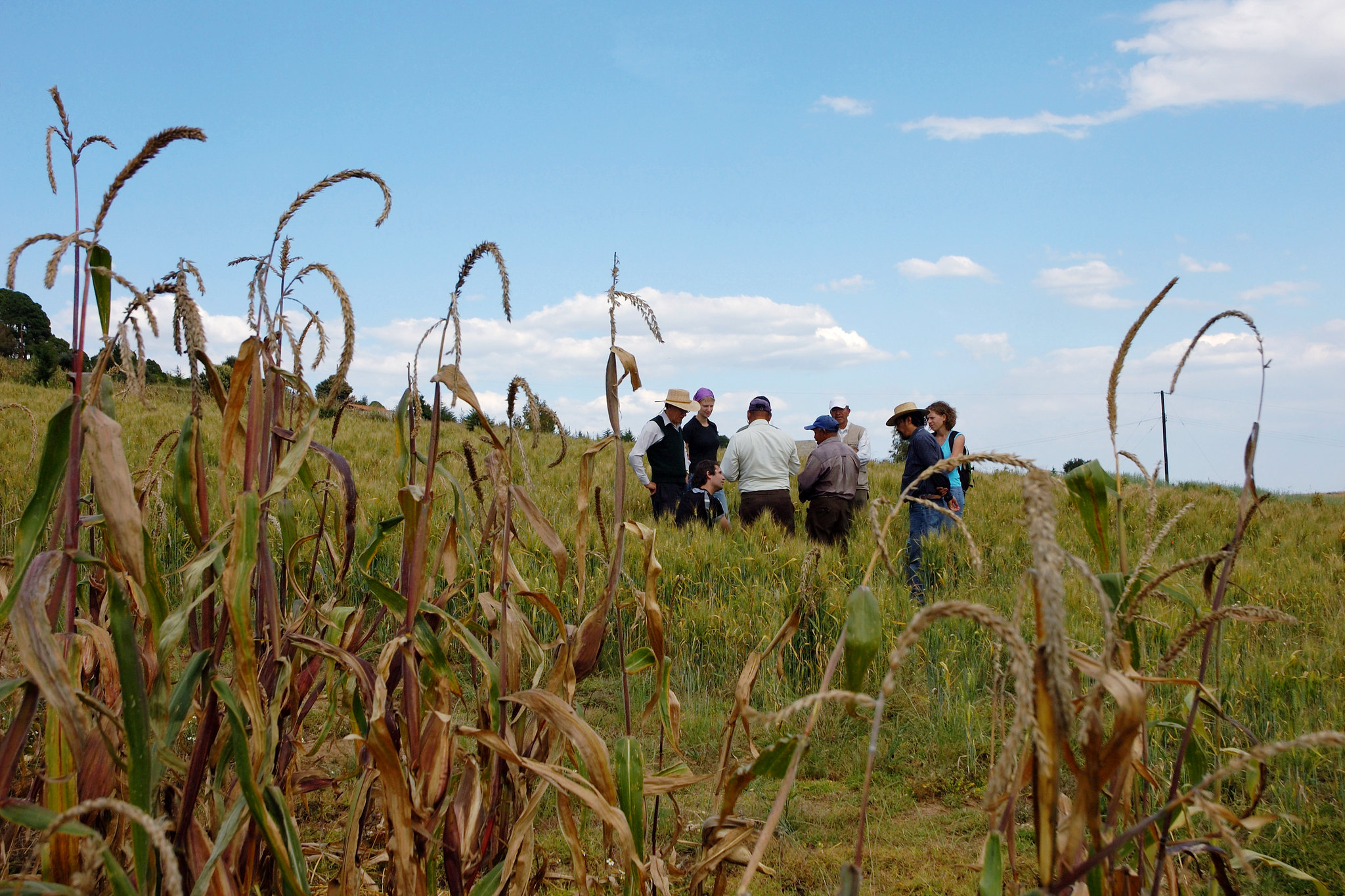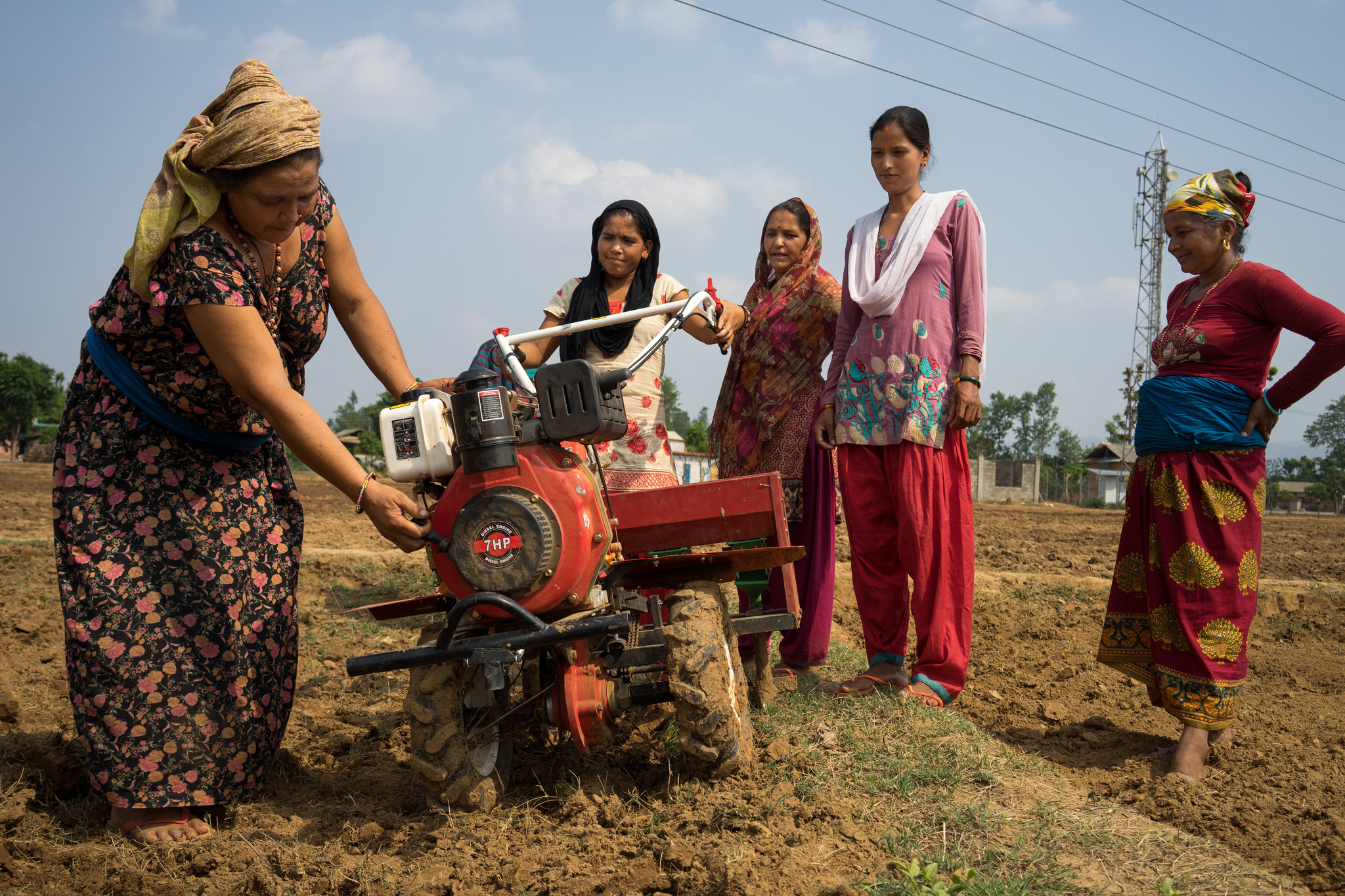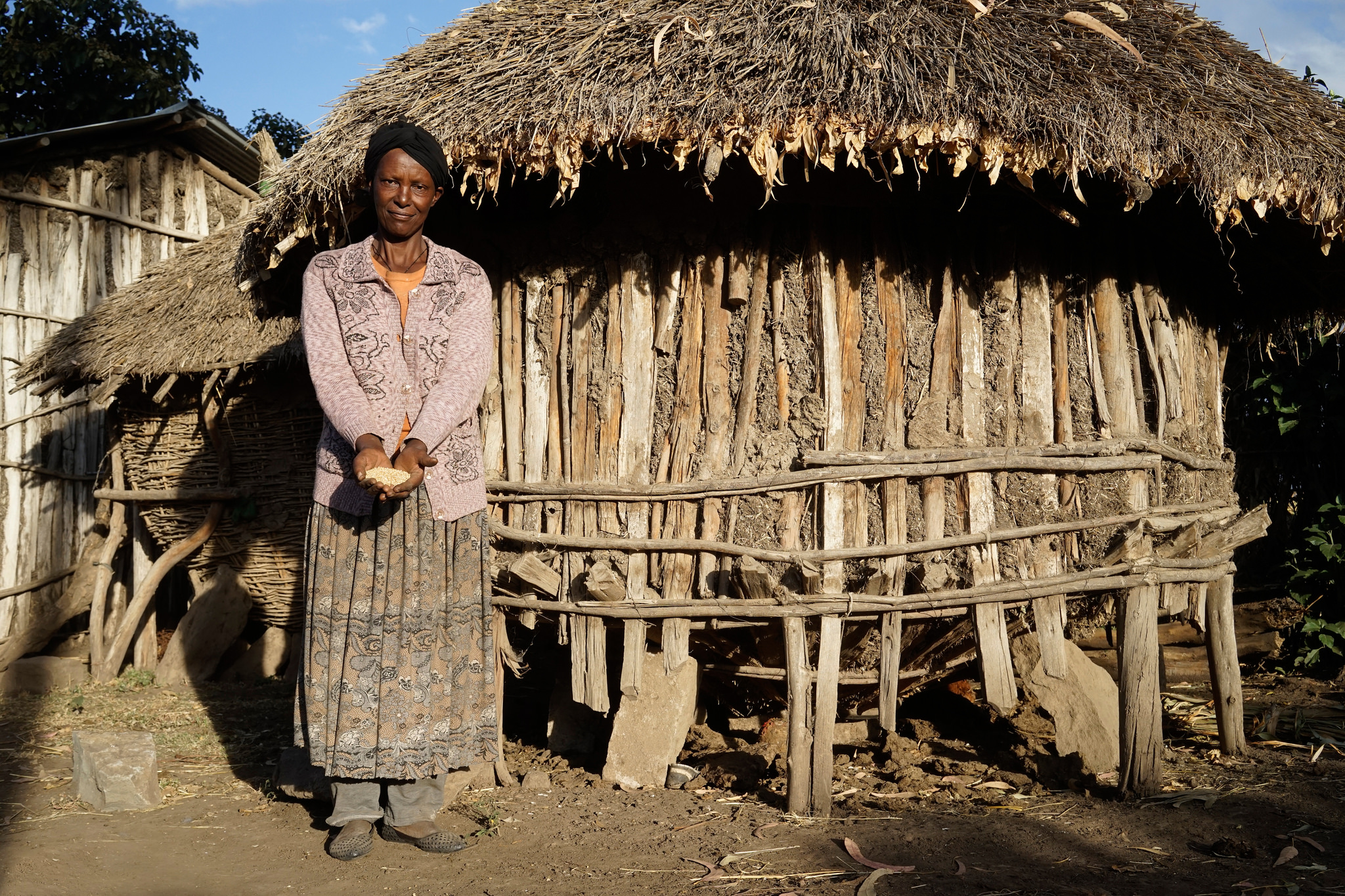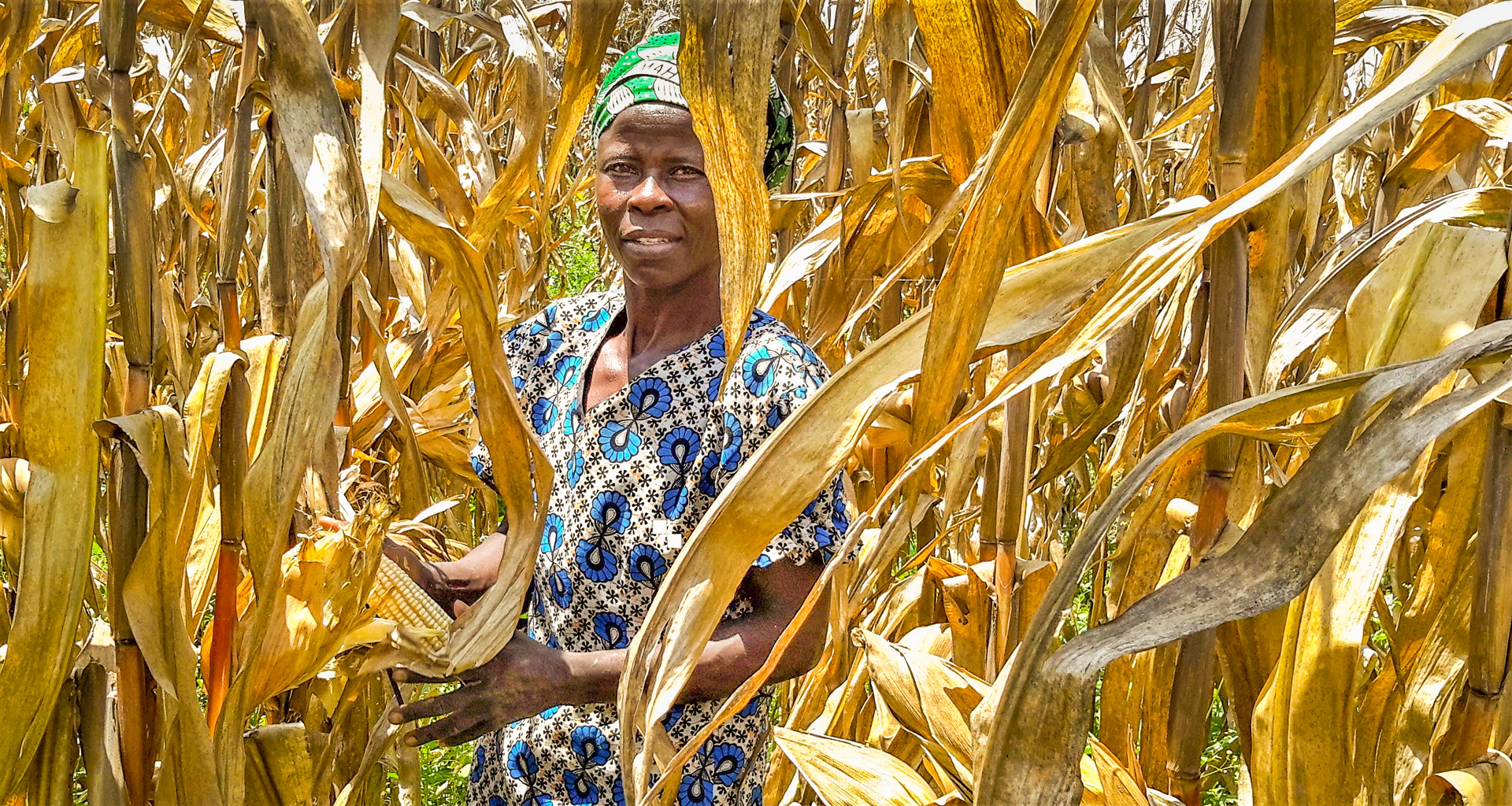Despite the many benefits of conservation agriculture, uptake by smallholder farmers remains limited. Alongside the struggle to maintain adequate soil cover and limited opportunities for crop diversification, weed management is a major constraint to the widespread adoption of conservation agriculture.
Although all three components of the practice – zero or minimal tillage, permanent soil cover and crop diversification – can reduce weed populations, the effects of these efforts may only become apparent in the medium to long term. As a result, many smallholders are likely to forgo these in favor of hand weeding, cheap herbicides and tillage – which controls weeds in the short term but also brings weed seeds from the seedbank to the soil surface and creates optimum conditions for germination.
In an effort to evaluate the impact of using conservation agriculture practices for weed management, researchers from the International Maize and Wheat Improvement Center (CIMMYT) used data from a long-term trial in the Mexican Highlands to evaluate weed biomass, density and diversity with and without herbicide control.
Results of their study – recently published in Agronomy – show that weed density and biomass were generally much lower in areas where conservation agriculture was practiced, compared to conventional tillage. All three components helped to significantly reduce weed biomass, with an even greater reduction when all three practices were applied together. When herbicides were applied, weed biomass in conservation agriculture was 91% lower in maize and 81% lower in wheat than in conventional tillage.
The authors found that different treatments favored different weed species but did not observe any trend toward increased perennial weeds in conservation agriculture. The data from their study supports claims that if adequate weed control is achieved in the initial years, weed populations in conservation agriculture systems are lower than in conventional tillage ones. Given these weed-controlling effects, the authors posit that these practices are likely to lead to lower herbicide use in the long term – which may be welcome news for smallholders who have reported weed management to be particularly problematic in the initial years after adopting conservation agriculture.
Read the full article in Agronomy: Rotation, Mulch and Zero Tillage Reduce Weeds in a Long‐Term Conservation Agriculture Trial
See more recent publications from CIMMYT researchers:
- Paddy in saline water: analysing variety-specific effects of saline water intrusion on the technical efficiency of rice production in Vietnam. 2019. Dam, T.H.T., Amjath Babu, T.S., Zander, P., Muller, K. In: Outlook on Agriculture v. 48 no. 3 page 237-245.
- Doubled haploid technology for line development in maize: technical advances and prospects. 2019. Chaikam, V., Molenaar, W., Melchinger, A.E., Prasanna, B.M. In: Theoretical and Applied Genetics v. 132 no. 12 pg. 3227-3243.
- Smallholder farmers’ willingness to pay for scale-appropriate farm mechanization: Evidence from the mid-hills of Nepal. 2019. Paudel, G.P., KC, D.B., Rahut, D.B., Khanal, N.P., Justice, S.E., McDonald, A.J. In: Technology in Society v. 59, art. 101196.
- Variations in straw fodder quality and grain–Straw relationships in a mapping population of 287 diverse spring wheat lines. 2019. Joshi, A.K., Kumar, U., Vinod Kumar Mishra, Chand, R., Chatrath, R., Naik, R., Suma S. Biradar., Singh, R.P., Neeraj Budhlakoti, Devulapalli, R., Blummel, M. In: Field Crops Research v. 243, art. 107627.
- Dynamic biochar effects on nitrogen use efficiency, crop yield and soil nitrous oxide emissions during a tropical wheat-growing season. 2019. Abbruzzini, T.F., Davies, C.A., Toledo, F.H., Pellegrino Cerri, C.E. In: Journal of Environmental Management, v. 252, art. 109638.
- The impact of agricultural interventions can be doubled by using satellite data. 2019. Meha Jain, Singh, B., Preeti Rao, Srivastava, A., Poonia, S. P., Blesh, J., Azzari, G., McDonald, A., Lobell, D.B. In: Nature Sustainability v. 2, pg. 931-934.
- A wheat chromosome 5AL region confers seedling resistance to both tan spot and Septoria nodorum blotch in two mapping populations. 2019. Wenjing Hua, Xinyao He, Dreisigacker, S., Sansaloni, C.P., Juliana, P., Singh, P.K. In: The Crop Journal v. 7, no. 6, pg. 809-818.
- Environmental variables contributing to differential performance of tropical maize hybrids across heat stress environments in South Asia. 2019. Vinayan, M.T., Zaidi, P.H., Seetharam, K., Md Ashraful Alam, Ahmed, S., Koirala, K.B., Arshad, Md., Kuchanur, P.H., Patil, A., Mandal, S.S. In: Australian Journal of Crop Science v. 13, no. 6, page 828-836.
- The use of pentaploid crosses for the introgression of Amblyopyrum muticum and D-genome chromosome segments into durum wheat. 2019. Othmeni, M., Grewal, S., Hubbart-Edwards, S., Cai-Yun Yang, Scholefield, D., Ashling, S., Yahyaoui, A.H., Gustafson, P., Singh, P.K., King, I.P., King, J. In: Frontiers in Plant Science v. 10, art. 1110.
- Alternate energy sources for lighting among rural households in the Himalayan region of Pakistan: access and impact. 2019. Ali, A., Rahut, D.B., Mottaleb, K.A., Aryal, J.P. In: Energy & Environment v. 30, no. 7, 1291-1312.
- Assessing climate adaptation options for cereal-based systems in the eastern Indo-Gangetic Plains, South Asia. 2019. Fantaye, K. T., Khatri-Chhetri, A., Aggarwal, P.K, Mequanint, F., Shirsath, P.B., Stirling, C., Jat, M.L., Rahut, D.B., Erenstein, O. In: Journal of Agricultural Science v. 157, no. 3, 189-210.
- Doing research and ‘doing gender’ in Ethiopia’s agricultural research system. 2019. Drucza, K.L., Tsegaye, M., Abebe, L. In: Gender, Technology and Development v. 23, no. 1, pg. 55-75.
- Exploring high temperature responses of photosynthesis and respiration to improve heat tolerance in wheat. 2019. Posch, B.C., Kariyawasam, B.C., Bramley, H., Coast, O., Richards, R.A., Reynolds, M.P., Trethowan, R.M., Atkin, O.K. In: Journal of Experimental Botany v. 70, no. 19, pg. 5051-5069.
- Farming on the fringe: shallow groundwater dynamics and irrigation scheduling for maize and wheat in Bangladesh’s coastal delta. 2019. Schulthess, U., Zia Ahmed, Aravindakshan, S., Rokon, G.M., Alanuzzaman Kurishi, A.S.M., Krupnik, T.J. In: Field Crops Research v. 239, pg. 135-148.
- A Bayesian genomic multi-output regressor stacking model for predicting multi-trait multi-environment plant breeding data. 2019. Montesinos-Lopez, O.A., Montesinos-Lopez, A., Crossa, J., Cuevas, J., Montesinos-Lopez, J.C., Salas Gutiérrez, Z., Lillemo, M., Juliana, P., Singh, R.P. In: G3: Genes, Genomes, Genetics v. 9, No. 10, pg. 3381-3393.
- 16. Improving grain yield, stress resilience and quality of bread wheat using large-scale genomics. 2019. Juliana, P., Poland, J.A., Huerta-Espino, J., Shrestha, S., Crossa, J., Crespo-Herrera, L.A., Toledo, F.H., Velu, G., Mondal, S., Kumar, U., Bhavani, S., Singh, P.K., Randhawa, M.S., Xinyao He, Guzman, C., Dreisigacker, S., Rouse, M.N., Yue Jin, Perez-Rodriguez, P., Montesinos-Lopez, O.A., Singh, D., Rahman, M.M., Marza, F., Singh, R.P. In: Nature Genetics v. 51, no. 10, pg. 1530-1539.
- Malting barley grain quality and yield response to nitrogen fertilization in the Arsi highlands of Ethiopia. 2019. Kassie, M., Fantaye, K. T. In: Journal of Crop Science and Biotechnology v. 22, no. 3, pg. 225-234.
- 18. Synergistic impacts of agricultural credit and extension on adoption of climate-smart agricultural technologies in southern Africa. 2019. Makate, C., Makate, M., Mutenje, M., Mango, N., Siziba, S. In: Environmental Development v. 32, art. 100458.
- An early warning system to predict and mitigate wheat rust diseases in Ethiopia. 2019. Allen, C., Thurston, W., Meyer, M., Nure, E., Bacha, N., Alemayehu, Y., Stutt, R., Safka, D., Craig, A.P., Derso, E., Burgin, L., Millington, S., Hort, M.C., Hodson, D.P., Gilligan, C.A. In: Environmental Research Letters v. 14, no. 11, art. 115004.
- 20. Understanding the relations between farmers’ seed demand and research methods: the challenge to do better. 2019. Almekinders, C., Beumer, K., Hauser, M., Misiko, M.T., Gatto, M., Nkurumwa, A.O., Erenstein, O. In: Outlook on Agriculture v. 48, no. 1, pg. 16-21.
- 21. Climate action for food security in South Asia? Analyzing the role of agriculture in nationally determined contributions to the Paris agreement. 2019. Amjath Babu, T.S., Aggarwal, P.K., Vermeulen, S. In: Climate Policy v. 19 no. 3, pg. 283-298.
- Future changes and uncertainty in decision-relevant measures of East African climate. 2019. Bornemann, F.J., Rowell, D.P., Evans, B., Lapworth, D.J., Lwiza, K., Macdonald, D.M.J., Marsham, J.H., Fantaye, K. T., Ascott, M.J., Way, C. In: Climatic Change v. 156, no. 3, pg. 365-384.
- Women’s time use and implications: for participation in cacao value chains: evidence from VRAEM, Peru. 2019. Armbruster, S., Solomon, J., Blare, T., Donovan, J.A. In: Development in Practice v. 29, no. 7, pg. 827-843.
- Estimates of the willingness to pay for locally grown tree fruits in Cusco, Peru. 2019. Blare, T., Donovan, J.A, Pozo, C. del. In: Renewable Agriculture and Food Systems v. 34, no. 1, pg. 50-61.
- 25. Smallholders’ coping mechanisms with wheat rust epidemics: lessons from Ethiopia. Debello, M. J., Hodson, D.P., Abeyo Bekele Geleta, Yirga, C., Erenstein, O. In: PLoS One v. 14 no. 7, art. e0219327.
- Fields on fire: alternatives to crop residue burning in India. 2019. Shyamsundar, P., Springer, N., Tallis, H., Polasky, S., Jat, M.L., Sidhu, H.S., Krishnapriya, P.P., Skiba, N., Ginn, W., Ahuja, V., Cummins, J., Datta, I., Dholakia, H.H., Dixon, J., Gerard, B., Gupta, R., Hellmann, J., Jadhav, A., Jat, H.S., Keil, A., Ladha, J.K., Lopez-Ridaura, S., Nandrajog, S., Paul, S., Ritter, A., Sharma, P.C., Singh, R., Singh, D., Somanathan, R. In: Science v. 365, no. 6453 pg. 536-538.
- Climate shock adaptation for Kenyan maize-legume farmers: choice, complementarities and substitutions between strategies. 2019. Tongruksawattana, S., Wainaina, P. In: Climate and Development v. 11, no. 8, pg. 710-722.
- Development of a participatory approach for mapping climate risks and adaptive interventions (CS-MAP) in Vietnam’s Mekong River Delta. 2019. Bui Tan Yen, Nguyen Hong Son, Le Thanh Tung, Amjath Babu, T.S., Sebastian, L. In: Climate Risk Management v. 24, pg. 59-70.
- Genetic divergence and diversity in Himalayan Puccinia striiformis populations from Bhutan, Nepal, and Pakistan. 2019. Khan, M.R., Rehman, Z., Nazir, S.N., Tshewang, S., Baidya, S., Hodson, D.P., Imtiaz, M., Sajid Ali In: Phytopathology v. 109, no. 10, pg. 1793-1800.
- Herencia de la resistencia del trigo (Triticum aestivum L.) huites F95 a roya amarilla causada por Puccinia striiformis F. sp. tritici W. = Inheritance of resistance to yellow rust caused by Puccinia striiformis F. sp. tritici on huites F95 wheat (Triticum aestivum L.). 2019. Rodriguez-Garcia, M.F., Huerta-Espino, J., Rojas Martínez, R.I., Singh, R.P., Villaseñor Mir, H.E., Zavaleta Mejía, E., Sandoval-Islas, S., Crossa, J, Caixia Lan In: Agrociencia v. 53, no. 5, pg. 765-780.


 Gender equality, youth and social inclusion
Gender equality, youth and social inclusion 
